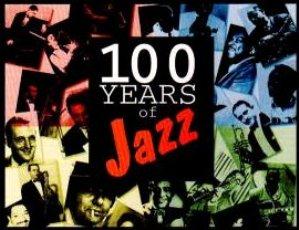100 Years of Jazz - Disc 03: White Bands - Chicago - Dixieland (1999)
100 Years of Jazz - Disc 03: White Bands - Chicago - Dixieland (1999)

1. New Orleans Rhythm Kings – Weary Blues (02:49) 2. Bix Beiderbecke & Frankie Trumbauer and His Orchestra – Singin' the Blues (03:02) 3. Eddie Lang & His Orchestra – Walkin' the Dog (03:02) 4. Boyd Senter and His Senterpedes – Mobile Blues (03:12) 5. Original Memphis Five – The Great White Way Blues (04:21) 6. Ladd's Black Aces – Aunt Hagar's Children (03:19) 7. Hoagy Carmichael's Collegians – March of the Hoodlums (02:23) 8. Husk O'Hare's Super Orchestra of Chicago – Tiger Rag (02:36) 9. Charles Pierce Orchestra – Bull Frog Blues (02:59) 10. The Bucktown Five – Steady Roll Blues (02:36) 11. Joe Venuti's Blue Four – The Wild Dog (02:42) 12. Blind Willie Dunn's Gin Bottle Four – Jet Black Blues (03:04) 13. Gene Gifford and His Orchestra – Nothin' but the Blues (03:15) 14. Red McKenzie and the Mound City Blue Blowers – If I Could Be With You One Hour Tonight (03:24) 15. Wingy Manone and His Orchestra – Bouncin' in Rhythm (02:46) 16. Bud Freeman & His Summa Cum Laude Orchestra – I've Found a New Baby (02:42) 17. Eddie Condon and His Windy City Seven – Love Is Just Around the Corner (03:05) 18. Bud Freeman Trio – Swingin' Without Mezz (03:08) 19. Benny Goodman and His Boys – Wolverine Blues (02:51) 20. The Benny Goodman Trio – That's a Plenty (02:49) 21. Bix Beiderbecke – In a Mist (Bixology) (02:44)
Dixieland, in music, a style of jazz, often ascribed to jazz pioneers in New Orleans, La., but also descriptive of styles honed by slightly later Chicago-area musicians. The term also refers to the traditional jazz that underwent a popular revival during the 1940s and that continued to be played into the 21st century.
Chicago style, approach to jazz group instrumental playing that developed in Chicago during the 1920s and moved to New York City in the ’30s, being preserved in the music known as Dixieland. Much of it was originally produced by trumpeter Jimmy McPartland, tenor saxophonist Bud Freeman, clarinetist Frank Teschemacher, and their colleagues in imitation of the New Orleans Rhythm Kings (originally the Friar’s Society Orchestra, including Leon Rappolo, Paul Mares, George Brunis, and others), a white New Orleans band playing at Chicago’s Friar’s Society.
Though much like New Orleans style, Chicago style can sometimes be differentiated by its greater emphasis on individual solos, a less relaxed feeling, and a somewhat smaller reliance on elements of 19th-century black ethnic music. Comparisons between the two forms are difficult because little New Orleans style was recorded before 1923, by which time both the black and the white New Orleans bands had already been in Chicago long enough to influence each other as well as the Chicago audience; this ruled out the existence of recorded examples illustrating how New Orleans black bands originally differed from New Orleans white bands and how all differed from the native Chicago bands during their 1920s Chicago residence. These styles employed simple accompanying rhythms (often just a chord on each beat by piano, guitar, or banjo, with bass and drums) and improvised counterlines among the melody instruments (trumpet, clarinet, trombone, saxophone, and occasionally violin). Some choruses contained mutual embellishments, whereas most had some sort of solo in the foreground while backgrounds were partly or completely worked out by the musicians who were not soloing. The degree of complexity seems to have depended primarily on the particular interests of the leader. For example, Jelly Roll Morton, a black leader from New Orleans, worked out elaborate arrangements for his Chicago record dates, yet Louis Armstrong, another black New Orleans native, did not. Similarly, some recordings by the Austin High Gang, as McPartland and his fellow white players were often called, are quite elaborate, yet others by them are informal.
For decades, the Chicago style was kept alive through the work of Eddie Condon. ---britannica.com
download (mp3 @320 kbs):
Zmieniony (Sobota, 17 Listopad 2018 08:50)








